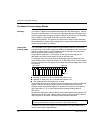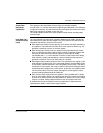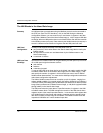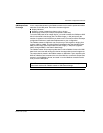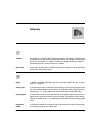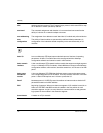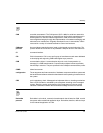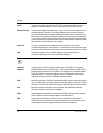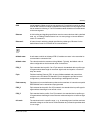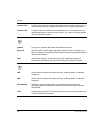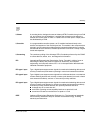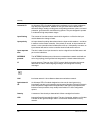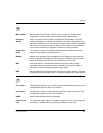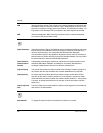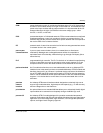
Glossary
176
890USE17700 April 2004
DHCP dynamic host configuration protocol. A TCP/IP protocol that allows a server to
assign an IP address based on a role name (host name) to a network node.
differential input A type of input design where two wires (+ and -) are run from each signal source to
the data acquisition interface. The voltage between the input and the interface
ground are measured by two high-impedance amplifiers, and the outputs from the
two amplifiers are subtracted by a third amplifier to yield the difference between the
+ and - inputs. Voltage common to both wires is thereby removed. Differential design
solves the problem of ground differences found in single-ended connections, and it
also reduces the cross-channel noise problem.
digital I/O An input or output that has an individual circuit connection at the module
corresponding directly to a data table bit or word that stores the value of the signal
at that I/O circuit. It allows the control logic to have discrete access to the I/O values.
DIN Deutsche industrial norms. A German agency that sets engineering and
dimensional standards and now has worldwide recognition.
economy
segment
A special type of STB I/O segment created when an STB NCO 1113 economy
CANopen NIM is used in the first location. In this implementation, the NIM acts as a
simple gateway between the I/O modules in the segment and a CANopen master.
Each I/O module in an economy segment acts as a independent node on the
CANopen network. An economy segment cannot be extended to other STB I/O
segments, preferred modules or standard CANopen devices.
EDS electronic data sheet. The EDS is a standardized ASCII file that contains information
about a network device’s communications functionality and the contents of its object
dictionary. The EDS also defines device-specific and manufacturer-specific objects.
EIA Electronic Industries Association. An organization that establishes electrical/
electronic and data communication standards.
EMC electromagnetic compatibility. Devices that meet EMC requirements can operate
within a system’s expected electromagnetic limits without error.
EMI electromagnetic interference. EMI can cause an interruption, malfunction, or
disturbance in the performance of electronic equipment. It occurs when a source
electronically transmits a signal that interferes with other equipment.
E



